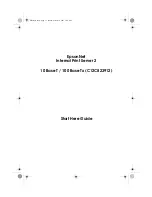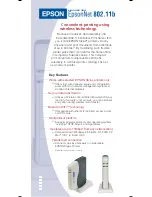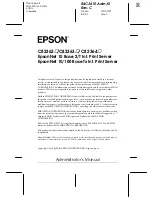
Particulate contamination
Attention:
Airborne particulates (including metal flakes or particles) and reactive gases acting alone or in
combination with other environmental factors such as humidity or temperature might pose a risk to the
device that is described in this document.
Risks that are posed by the presence of excessive particulate levels or concentrations of harmful gases
include damage that might cause the device to malfunction or cease functioning altogether. This
specification sets forth limits for particulates and gases that are intended to avoid such damage. The limits
must not be viewed or used as definitive limits, because numerous other factors, such as temperature or
moisture content of the air, can influence the impact of particulates or environmental corrosives and gaseous
contaminant transfer. In the absence of specific limits that are set forth in this document, you must
implement practices that maintain particulate and gas levels that are consistent with the protection of human
health and safety. If Lenovo determines that the levels of particulates or gases in your environment have
caused damage to the device, Lenovo may condition provision of repair or replacement of devices or parts
on implementation of appropriate remedial measures to mitigate such environmental contamination.
Implementation of such remedial measures is a customer responsibility.
Table 17. Limits for particulates and gases
Contaminant
Limits
Particulate
• The room air must be continuously filtered with 40% atmospheric dust spot efficiency (MERV
9) according to ASHRAE Standard 52.2
1
.
• Air that enters a data center must be filtered to 99.97% efficiency or greater, using high-
efficiency particulate air (HEPA) filters that meet MIL-STD-282.
• The deliquescent relative humidity of the particulate contamination must be more than 60%
2
.
• The room must be free of conductive contamination such as zinc whiskers.
Gaseous
• Copper: Class G1 as per ANSI/ISA 71.04-1985
3
• Silver: Corrosion rate of less than 300 Å in 30 days
1
ASHRAE 52.2-2008 -
Method of Testing General Ventilation Air-Cleaning Devices for Removal Efficiency by
Particle Size
. Atlanta: American Society of Heating, Refrigerating and Air-Conditioning Engineers, Inc.
2
The deliquescent relative humidity of particulate contamination is the relative humidity at which the dust absorbs
enough water to become wet and promote ionic conduction.
3
ANSI/ISA-71.04-1985.
Environmental conditions for process measurement and control systems: Airborne
contaminants
. Instrument Society of America, Research Triangle Park, North Carolina, U.S.A.
Telecommunication regulatory statement
This product may not be certified in your country for connection by any means whatsoever to interfaces of
public telecommunications networks. Further certification may be required by law prior to making any such
connection. Contact a Lenovo representative or reseller for any questions.
Electronic emission notices
When you attach a monitor to the equipment, you must use the designated monitor cable and any
interference suppression devices that are supplied with the monitor.
129
Summary of Contents for 7944
Page 1: ...System x3550 M3 Installation and User s Guide Machine Type 4254 and 7944...
Page 44: ...Figure 14 Server components 34 System x3550 M3Installation and User s Guide...
Page 114: ...104 System x3550 M3Installation and User s Guide...
Page 132: ...122 System x3550 M3Installation and User s Guide...
Page 136: ...126 System x3550 M3Installation and User s Guide...
Page 148: ...138 System x3550 M3Installation and User s Guide...
Page 149: ......
Page 150: ...Part Number 00KC032 Printed in China 1P P N 00KC032 1P00KC032...












































